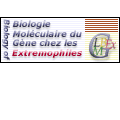
|
|















|
International Summer School
From Genome to Life:
Structural, Functional and Evolutionary approaches
|
MUNNICH
Arnold |
|
Département de Génétique . Hopital Necker-Enfants Malades, 149 rue de Sèvres, 75743 Paris Cedex 15 title: From Disease Genes To Prevention And Treatment Since 1980, we have made every efforts to conciliate the clinical and molecular approaches of genetic diseases in children. Our efforts have resulted in the founding of the Department of Genetics, Hôpital des Enfants-Malades, Paris, which brings together i) a Clinical Research INSERM unit, dedicated to the mapping and identification of genes causing developmental and neurogenetic diseases in children, ii) the Medical Genetic Clinic of Assistance Publique, Hôpitaux de Paris.
Thanks to the improvement of the human gene map, we have mapped and/or identified twenty disease causing genes, including the genes for achondroplasia (1/15,000 live births, fibroblast growth factor receptor 3), Hirschsprung disease (1/5,000 live births, Ret oncogene), spinal muscular atrophy (1/6,000 live births, survival motor neuron, SMN), X-linked spastic paraplegia (proteolipid protein), Holt-Oram syndrome (brachyury), multiple exostosis, Stargardt macular dystrophy and, more recently, Leber congenital amaurosis (retinal guanylate cyclase), Saethre-Chotzen craniosynostosis (twist), Pearson's marrow pancreas syndrome (mitochondrial DNA deletion) and the first nuclear gene for Leigh syndrome. We have recently shown that Friedreich ataxia results from multiple iron-sulphur protein injury caused by iron overload in mitochondria and have identified the first inborn error of quinone synthesis.
What are the benefits for the children and their families ? The mapping and identification of these genes make carrier testing, genetic counselling and prenatal diagnosis of these conditions now feasible and allow novel therapeutic approaches. Indeed, based on their gene identifications, we have been able to devise i) a pharmacological approach to reexpress the centromeric counterpart of SMN, ii) a treatment of inborn errors of quinone synthesis and iii) a treatment of hypertrophic cardiomyopathy by short chain quinones in Friedreich ataxia.
The originality of our project consists in the combination of a clinical expertise and a molecular approach of medical genetics in the unique environment of a large european pediatric hospital.
|